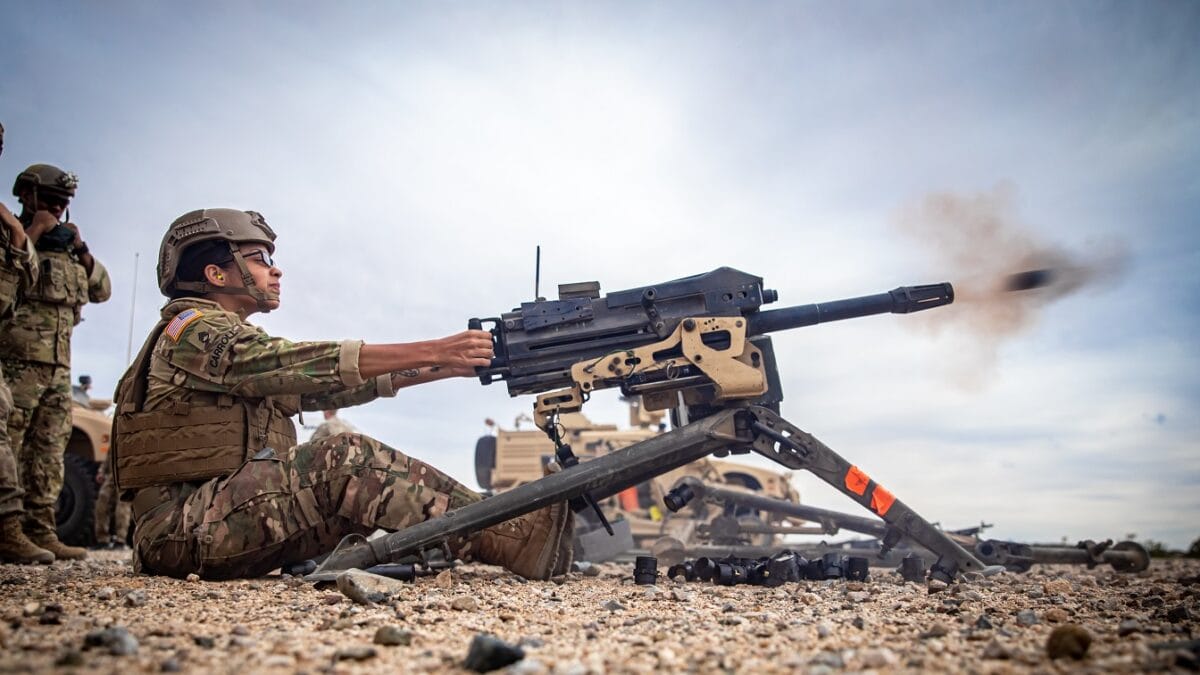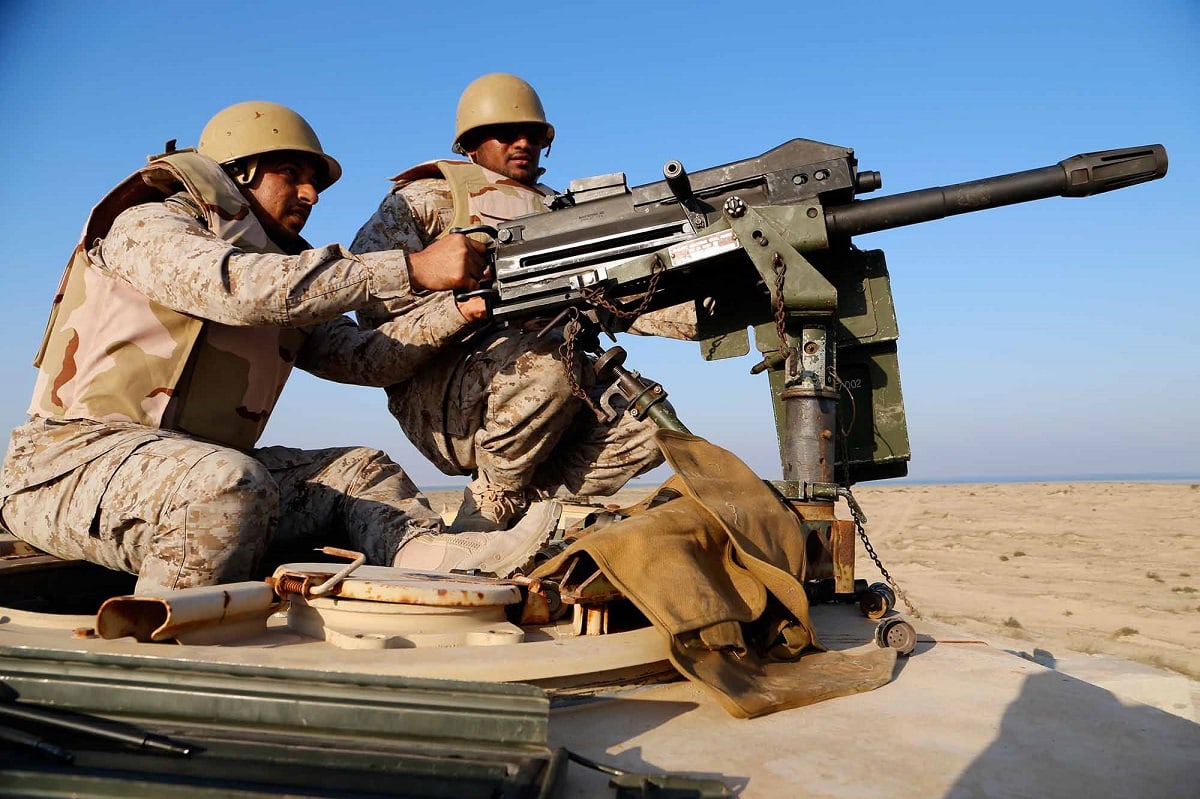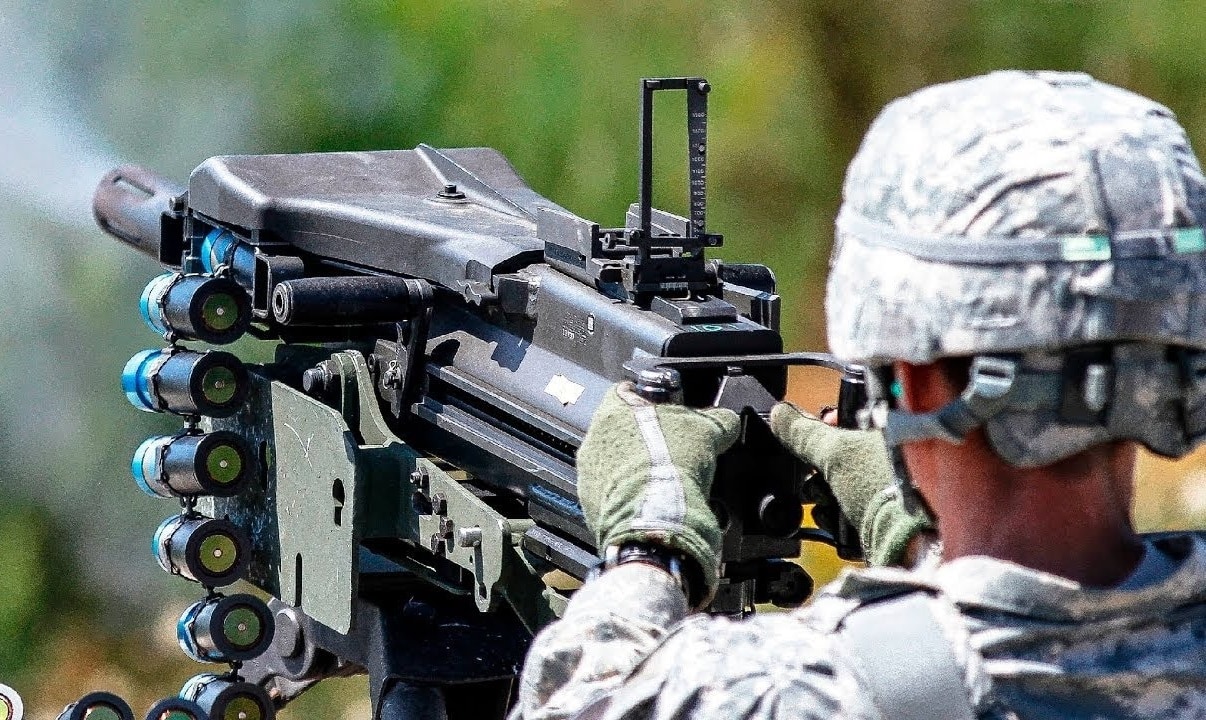You’ve seen the movies when soldiers throw a grenade. It’s not always accurate and it takes time to pull the pin, aim, and release it. You may have also seen the single-shot shotgun-style grenade launcher used in Vietnam or the grenade-launching tubes mounted on an M-16. The Mk 19 has changed everything you know about grenades.

A Soldier assigned to 3rd Special Forces Group (Airborne) fires a MK 19 automatic grenade launcher during a training exercise at Camp McGregor, New Mexico March 26, 2020. The training exercise focused on enhancing a wide variety of skillsets for the participating Green Berets and Soldiers such as weapons training and medical training to prepare them for future operations. (U.S. Army photo by Sgt. Steven Lewis)
MK 19: The Concept
The Mk 19 is a belt-fed automatic grenade launcher. It shoots M430 40mm grenades. The Mk-19 can fire from a tripod or a vehicle. The rate of fire is usually sustained at 40 rounds a minute, although that can be improved depending on the combat situation. So, soldiers can ultimately fire one round per second.
The maximum effective range is 1,600 meters.
Pros: What It Can Kill
It can damage or destroy lightly-armored vehicles because the round can penetrate two inches of armor, but its main use is against troops in the open. The grenades can kill the enemy within five meters of impact and wound personnel within 15 meters of impact. The Mk 19 is great for suppressing enemy fire, while maneuver elements flank the bad guys. It is simple to use as long as visibility is good.
It helps to have an assistant-gunner or spotter to assist soldiers and marines when it is time to adjust fire. One of the amazing things about the Mk 19 is its low recoil. Users barely feel the shots going out. But this also makes it easier to waste grenades when aiming is poor.
Another feature is the open bolt that keeps the weapon from getting too hot.
The Cons
The downside is the weight of the Mk 19. It weighs 77 pounds, so it’s not very portable for individual soldiers or marines.
Most of the time it is mounted on vehicles. The Mk 19 can be integrated with the Common Remotely Operated Weapon Station (CROWS). This is a vehicle mount that allows users to stay inside the vehicle and run the Mk 19 with a remote-controlled system. That’s the modern aspect of the Mk-19, one of the downsides is that it is over 50 years old. Some prefer the updated Mk 47 automatic grenade launcher. The Mk-47 weighs in at under 40 pounds, so it is more portable.
The Mk 19 has maximum effectiveness when paired with another vehicle that has an M2 .50 caliber machine gun. The M2 makes the enemy duck for cover and then the Mk 19 can launch grenades overhead that destroy the cover. The vehicles can them swarm the enemy troops in the open. A mobile Mk 19 and an M2 is also helpful if a convoy gets ambushed and has to change direction or retreat. Both weapons systems can then provide cover for a withdrawal, so soldiers can live to fight another day.

A Saudi Marine fires a Mk19 grenade launcher during a joint machinegun live-fire exercise with U.S. Marines from Echo Company, Battalion Landing Team 2nd Battalion, 1st Marines, 11th Marine Expeditionary Unit (MEU), as part of exercise Red Reef 15, Ras Al Khair, Saudi Arabia, Dec. 11. The U.S. Navy has been operating in the region for more than 60 years and intends to remain in the region to support our regional partners and promote long-term regional stability and freedom of navigation. (U.S. Marine Corps photos by Gunnery Sgt. Rome M. Lazarus/Not Released)
1945’s new Defense and National Security Editor, Brent M. Eastwood, PhD, is the author of Humans, Machines, and Data: Future Trends in Warfare. He is an Emerging Threats expert and former U.S. Army Infantry officer.

